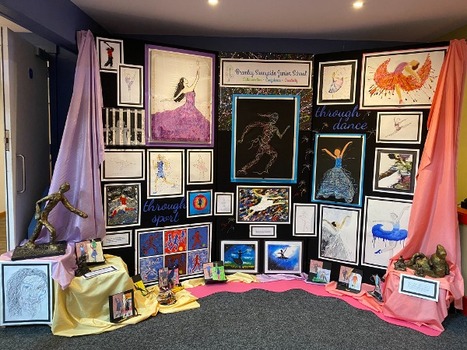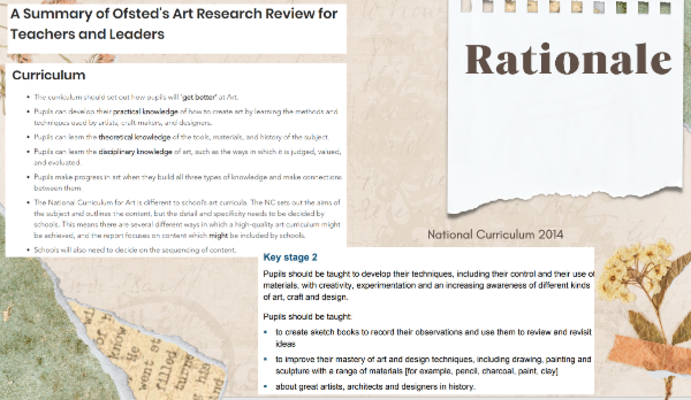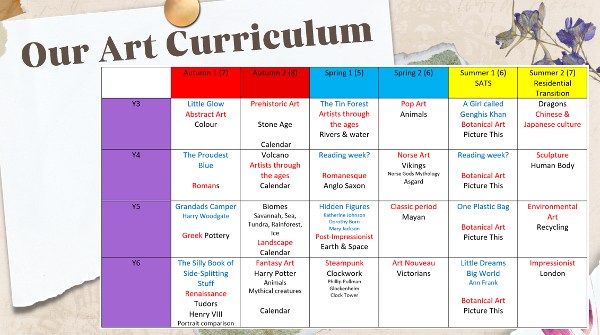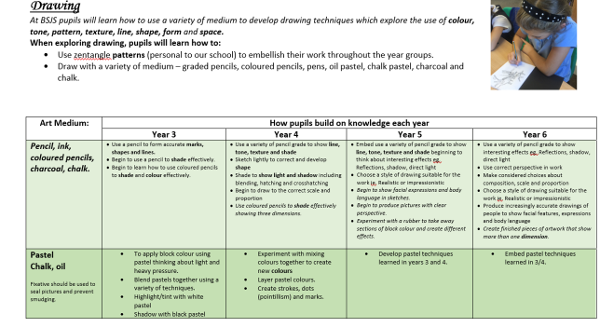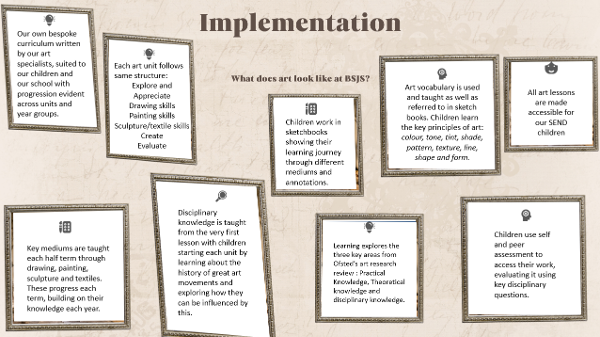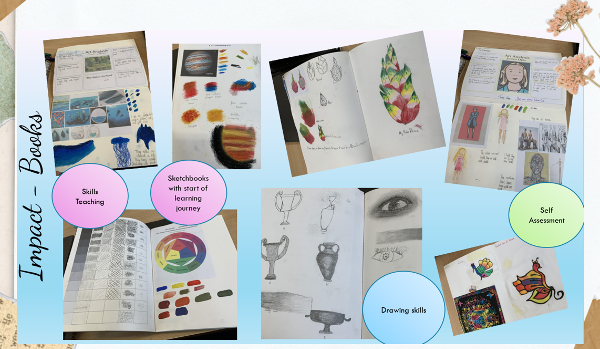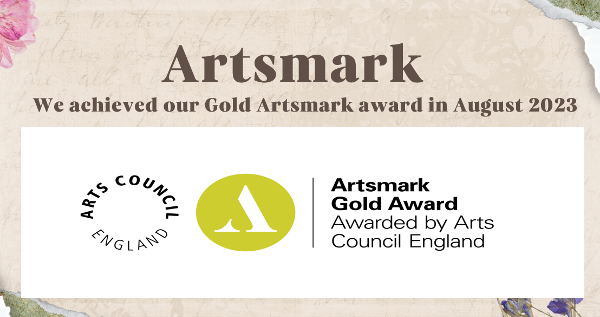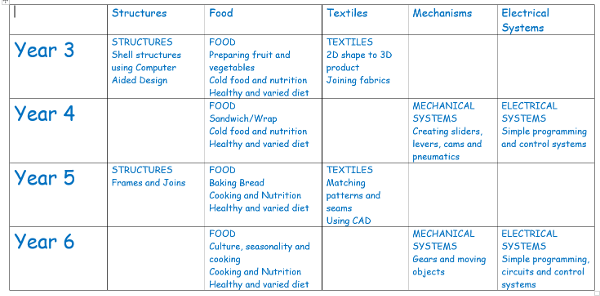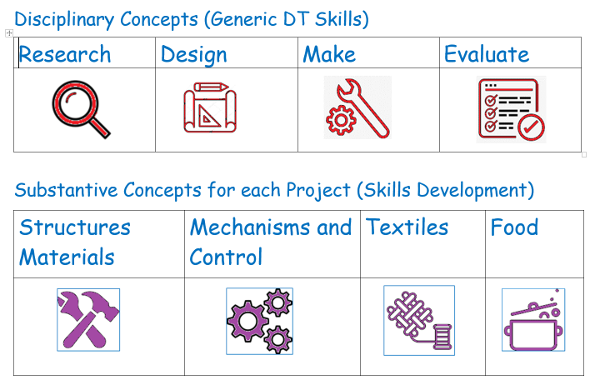Art and DT Curriculum
Through our creative and inclusive approach to the arts, we enable our children to become confident and capable artists who have aspirations for art in the future.
We explore art through mix of practical, theoretical and disciplinary knowledge using sculpture, drawing, painting and textile skills to express their learning.
Pupils at BSJS LOVE to do art!
Pupils develop their practical knowledge of how to create art by learning the methods and techniques used by artists, craft-makers, and designers. Our curriculum uses drawing, painting and sculpture to develop and share their ideas, experiences and imagination. Pupils learn how build their substantive knowledge based on the knowledge of the seven elements of art colour, tone, texture, line, shape, form and space and also including the seven principles of art balance, contrast, emphasis, pattern, rhythm, variety and unity.
Pupils learn the theoretical knowledge of the tools, materials, and history of the subject.
Pupils learn the disciplinary knowledge of art, such as the critical evaluation of artists work; evaluating style and technique and having the ability to appraise a piece of work
Pupils create a learning journey in sketchbooks - exploring great artists/craft makers/architects and designers in history and use these to influence their work, recording their observations by reviewing and revisiting ideas.
At Bramley Sunnyside we believe that an enriching DT curriculum will develop our pupils' personal creativity. Design and Technology is a practical subject. It encourages children to learn, to think creatively and to solve problems both as individuals and as part of a group. This allows them to thrive as team members. Being resilient is a huge part of DT. We encourage children to use their creativity and imagination, to design and make products that solve real problems within a variety of different contexts. They are encouraged to consider their own and others’ needs, wants and values. We use key concepts in order to enhance and embed learning, therefore delivering engaging projects. The children are also given the opportunity to reflect upon and evaluate past and present designs, their uses and effectiveness. They are encouraged to become innovators and risk-takers.
We use "Projects in a Page", a national scheme for Primary Design and Technology projects. The Curriculum has been designed to cover all of the National Curriculum objectives for KS2. This will ensure the pupils receive the breadth of learning required by the National Curriculum and they progressively increase their knowledge, understanding and skills over time.
Each project will focus on: Investigative and Evaluative Activities, Focussed Tasks and a Design, Make and Evaluate mini-project. DT will be taught by either explicit weekly sessions or blocks as and when the timetable allows but there are also many opportunities to develop cross-curricular links and apply their learning in other subjects.
Children’s learning is evidenced in a DT Journal. Investigative and evaluative activities, focussed tasks and work relating to the design, make, evaluate project and is recorded alongside any peer or self-assessment.

